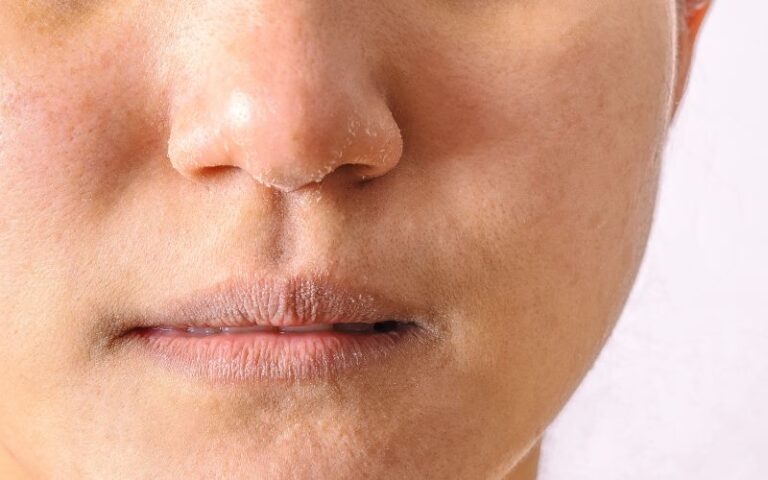Seasonal Skin Allergies: Everything We Know

As the seasons change, so does our skin. While some of us may welcome the new weather with open arms, our skin may not be so accommodating. Seasonal skin allergies are a common occurrence that can cause discomfort and irritation, ruining our summer fun. Identifying and treating these allergies early on is crucial to prevent them from worsening and causing more serious skin issues.
This comprehensive guide will delve into the world of seasonal skin allergies, exploring their symptoms, causes, treatments, and everything in between. So, grab a cup of tea, sit back, and let’s dive into the fascinating realm of seasonal allergies.
Table Of Contents
- What Are Seasonal Skin Allergies?
- Common Allergens in Different Seasons
- How Seasonal Allergies Affect Your Skin
- Factors that Increase the Risk
- Diagnosis and Testing for Seasonal Skin Allergies
- Effective Treatments for Seasonal Skin Allergies
- Natural Remedies for Seasonal Skin Allergies
- Prevention and Lifestyle Tips
- Managing Seasonal Skin Allergies in Children
- Seasonal Skin Allergies vs. Other Skin Conditions
- Can Seasonal Skin Allergies Be Prevented?
What Are Seasonal Skin Allergies?
Seasonal skin allergies, also known as allergic dermatitis or seasonal allergic contact dermatitis, are allergic reactions that occur when the skin comes into contact with specific allergens. These allergens are more prevalent during certain times of the year, such as spring or fall.
Common triggers include pollen, mold spores, and certain plants. When the immune system of an allergic individual encounters these allergens, it releases histamines, causing inflammation, itching, and redness on the skin.
Common Allergens in Different Seasons
When it comes to seasonal skin allergies, symptoms can vary depending on the allergen and the individual. However, there are some common symptoms that many people experience during different seasons:
1. Fall Allergies
Fall allergies, also known as autumn allergies, are typically triggered by the release of ragweed pollen. Ragweed is a common weed that produces large amounts of lightweight pollen that can travel through the air for long distances. When individuals with ragweed allergies inhale or come into contact with ragweed pollen, their immune system reacts, leading to allergy symptoms.
Common symptoms of fall allergies include sneezing, itchy and watery eyes, nasal congestion, runny nose, and sometimes a rash or skin irritation upon contact with ragweed.
Fall allergies can significantly impact individuals during late summer and early fall when ragweed pollen levels are at their peak.
2. Winter Allergies
While winter is commonly associated with colds and flu, some people may also experience allergies during this season. The main triggers for winter allergies include indoor allergens such as dust mites, pet dander, and mold spores. Spending more time indoors during the winter months exposes individuals to these allergens, leading to allergic reactions.
Symptoms of winter allergies can include sneezing, coughing, itchy skin, congestion, and even exacerbation of asthma symptoms in some cases. Proper ventilation, regular cleaning, and minimizing exposure to indoor allergens can help alleviate symptoms of winter allergies.
3. Spring Allergies
Spring allergies, also referred to as hay fever or seasonal allergic rhinitis, occur when plants release pollen into the air during the springtime. Tree pollen is a common allergen during this season, with trees such as oak, birch, cedar, and pine being significant contributors.
Symptoms of spring allergies can vary but often include sneezing, itchy or watery eyes, nasal congestion, fatigue, and occasionally a skin rash. The severity of symptoms can depend on the individual’s sensitivity to pollen and the pollen count in their area.
Taking precautions such as staying indoors during peak pollen times, using air purifiers, and taking antihistamines can help manage spring allergy symptoms.
4. Summer Allergies
Summer allergies are primarily caused by grass pollen, which is prevalent during this season. Grasses like Bermuda grass, Timothy grass, and Kentucky bluegrass release pollen that can trigger allergic reactions.
Symptoms of summer allergies can include sneezing, coughing, itchy throat, itchy and watery eyes, and skin rashes. People with grass pollen allergies may experience heightened symptoms when spending time outdoors in grassy areas or when mowing the lawn.
Avoiding peak pollen times, wearing sunglasses to protect the eyes, and taking allergy medications can help alleviate symptoms during the summer months.
It’s important to note that the severity and specific triggers of seasonal allergies can vary depending on geographical location, climate, and individual sensitivities. Consulting with a healthcare professional can provide a personalized understanding of one’s allergies and help determine the most effective management strategies.
How Seasonal Allergies Affect Your Skin
Seasonal allergies can affect the skin in various ways, causing a range of symptoms. Here’s an explanation of how seasonal allergies can impact the skin:
1. Allergic Contact Dermatitis
Seasonal allergies can lead to allergic contact dermatitis, which occurs when the skin comes into direct contact with an allergen.
Common allergens include pollen, grass, mold, and certain plants.
Symptoms of contact dermatitis include redness, itching, swelling, and the development of a rash or blisters on the skin.
2. Eczema (Atopic Dermatitis)
Seasonal allergies can trigger or worsen symptoms of eczema, a chronic inflammatory skin condition. People with eczema may experience increased itching, dryness, redness, and the formation of patches or scales on the skin during allergy seasons. The skin can become more sensitive and prone to flare-ups.
3. Hives (Urticaria)
Hives are a common allergic reaction characterized by raised, itchy, and red welts on the skin. Seasonal allergies can trigger hives in susceptible individuals. Hives may appear and disappear rapidly and can occur anywhere on the body. They are often accompanied by itching and discomfort.
4. Itchy or Watery Eyes
Seasonal allergies can also affect the eyes, leading to itching, redness, watering, and a burning sensation. Rubbing the eyes due to itching can further irritate the delicate skin around the eyes, causing redness and swelling.
5. Swollen or Itchy Lips
Some individuals may experience allergic reactions on their lips during allergy seasons. Lips can become swollen, itchy, and develop dryness or a rash due to exposure to allergens in the environment.
NOTE: Seasonal allergies primarily affect the respiratory system, causing symptoms like sneezing, congestion, and coughing. However, these respiratory symptoms can indirectly impact the skin through rubbing, scratching, or the release of inflammatory mediators in the body.
If you suspect you have seasonal allergies and are experiencing skin-related symptoms, it’s advisable to consult with a healthcare professional or dermatologist for an accurate diagnosis and appropriate treatment.
Factors that Increase the Risk
Certain factors can increase the risk of developing seasonal skin allergies. These include:
- Family history of allergies or allergic conditions
- History of other allergic reactions, such as asthma or hay fever
- Living in areas with high pollen counts
- Exposure to environmental pollutants
- Weakened immune system
Diagnosis and Testing for Seasonal Skin Allergies
Diagnosis and testing for seasonal skin allergies involve various methods to identify the specific allergens causing an individual’s allergic reaction. Here’s a brief explanation of the process:
1. Medical History
The first step is to gather information about the patient’s medical history, including their symptoms, when the symptoms occur, and any potential triggers or patterns.
2. Physical Examination
A dermatologist or allergist will conduct a thorough physical examination of the skin to assess the type and severity of the allergic reaction.
3. Patch Testing
Patch testing is commonly used to diagnose contact dermatitis, which is a type of skin allergy caused by direct contact with allergens. Small patches containing common allergens are applied to the skin, usually on the back, and left for a specified period. The patches are then removed, and the skin is examined for any signs of allergic reactions.
4. Skin Prick Test
This test is commonly used to diagnose respiratory allergies, such as hay fever, which can cause skin symptoms. A small amount of allergen extract is placed on the forearm or back, and a tiny needle or lancet is used to prick the skin, allowing the allergen to enter. If the person is allergic to that specific allergen, a small raised bump or redness, known as a wheal, will appear.
5. Blood Tests
Blood tests, such as specific IgE (immunoglobulin E) tests, can measure the level of allergen-specific antibodies in the blood. These tests can help identify allergens that may be causing the seasonal skin allergies. Blood tests are particularly useful when skin prick testing is not possible or inconclusive.
6. Elimination Diet
In some cases, a healthcare professional may recommend an elimination diet to identify potential food allergies that could be contributing to the skin symptoms. By eliminating certain foods from the diet and then reintroducing them systematically, it’s possible to determine if a specific food triggers the allergic reaction.
It’s important to note that the diagnosis of seasonal skin allergies may require a combination of these methods, as each individual’s case is unique. The chosen diagnostic approach will depend on the patient’s symptoms, medical history, and the suspected allergens involved. Therefore, it’s best to consult with a qualified healthcare professional to determine the most appropriate testing method for a particular case.
Effective Treatments for Seasonal Skin Allergies
There are several effective treatments available for managing seasonal skin allergies. The choice of treatment depends on the specific symptoms and severity of the allergy. Here are some common approaches:
- Avoidance of Allergens: The first step in managing seasonal skin allergies is to minimize exposure to the allergens causing the reaction. This may involve staying indoors during peak pollen times, keeping windows closed, using air purifiers, and avoiding known triggers such as certain plants or outdoor activities.
- Topical Steroids: Topical corticosteroid creams or ointments are commonly used to reduce inflammation and relieve itching associated with seasonal skin allergies. They can help alleviate symptoms such as rashes, redness, and swelling. These medications should be used as directed by a healthcare professional and for the prescribed duration to avoid potential side effects.
- Antihistamines: Oral antihistamines can be helpful in managing itching, redness, and other allergic symptoms. They work by blocking the effects of histamine, a chemical released during an allergic reaction. Non-drowsy antihistamines are preferred, especially for daytime use. It’s important to consult a healthcare professional for appropriate antihistamine options and dosage recommendations.
- Moisturizers: Keeping the skin well-hydrated with regular use of moisturizers can help soothe dryness and minimize itching associated with seasonal allergies. Look for fragrance-free and hypoallergenic moisturizers that are suitable for sensitive skin.
- Cold Compresses: Applying cold compresses or ice packs to the affected areas can provide temporary relief from itching and inflammation. The cold temperature helps numb the skin and reduces the urge to scratch.
- Allergy Immunotherapy: In cases of severe or persistent seasonal allergies, allergen immunotherapy (allergy shots) may be recommended. This treatment involves gradually exposing the individual to small amounts of the allergen over time, which can help desensitize the immune system and reduce the severity of allergic reactions.
- Prescription Medications: For more severe cases or when other treatments are ineffective, a healthcare professional may prescribe stronger topical steroids, calcineurin inhibitors, or other medications to manage the symptoms of seasonal skin allergies.
It’s important to consult with a healthcare professional or dermatologist to determine the most appropriate and effective treatment options based on individual needs and specific allergies. They can provide a personalized treatment plan to help manage and alleviate seasonal skin allergy symptoms.
Natural Remedies for Seasonal Skin Allergies
Natural remedies can complement conventional treatments for seasonal skin allergies. While they may provide relief for some individuals, it’s important to note that their effectiveness can vary from person to person.
Here are 10 natural remedies that may help alleviate symptoms of seasonal skin allergies:
- Aloe Vera: Aloe vera gel has soothing and anti-inflammatory properties that can help reduce itching and inflammation. Apply pure aloe vera gel directly to the affected areas of the skin.
- Oatmeal Baths: Colloidal oatmeal baths can provide relief for itchy and irritated skin. Add finely ground oatmeal to a lukewarm bath and soak for 15-20 minutes.
- Cold Compress: Applying a cold compress or ice pack to the affected areas can help reduce itching and inflammation. Wrap ice cubes in a clean cloth and gently apply it to the skin for short intervals.
- Coconut Oil: Coconut oil has moisturizing properties and can help soothe dry, itchy skin. Apply virgin coconut oil directly to the affected areas.
- Witch Hazel: Witch hazel is a natural astringent that can help relieve itching and reduce inflammation. Apply witch hazel extract to a cotton pad and gently dab it on the affected skin.
- Chamomile Tea: Chamomile tea has anti-inflammatory properties and can be used topically to soothe itchy skin. Brew a strong cup of chamomile tea, let it cool, and apply it to the affected areas using a clean cloth or cotton pad.
- Apple Cider Vinegar: Apple cider vinegar has been used to relieve itching and inflammation associated with allergies. Dilute apple cider vinegar with water, and apply it to the skin using a cotton ball. However, it’s essential to perform a patch test first to ensure there is no adverse reaction.
- Calendula: Calendula is a herb with anti-inflammatory properties that can help soothe irritated skin. Use calendula creams or ointments on the affected areas as directed.
- Tea Tree Oil: Tea tree oil has antimicrobial and anti-inflammatory properties. Dilute tea tree oil with a carrier oil, such as coconut oil, and apply it to the affected areas. It’s important to perform a patch test and avoid using tea tree oil on broken or sensitive skin.
- Probiotics: Probiotics, either through supplements or by consuming probiotic-rich foods, can help support a healthy immune system and potentially reduce allergic reactions. Consult with a healthcare professional for guidance on choosing the right probiotic supplement.
Remember, natural remedies may not work for everyone, and it’s important to consult with a healthcare professional or dermatologist before trying any new remedies, especially if you have severe or persistent symptoms. They can provide appropriate guidance and ensure these remedies are safe and suitable for your specific condition.
Prevention and Lifestyle Tips
Prevention and lifestyle tips can play a crucial role in managing and reducing the impact of seasonal skin allergies. Here are some recommendations to consider:
- Minimize Exposure to Allergens: Stay informed about the specific allergens that trigger your seasonal skin allergies, such as pollen or mold spores. Check local pollen counts and try to limit your outdoor activities during peak times. Keep windows closed at home and in the car to reduce the entry of allergens.
- Wear Protective Clothing: When spending time outdoors during allergy seasons, cover your skin as much as possible to minimize direct contact with allergens. Wear long sleeves, pants, a hat, and sunglasses to protect your skin and eyes.
- Practice Good Hygiene: After spending time outdoors, promptly wash your face and hands to remove any allergens that may have come into contact with your skin. Showering before bedtime can help remove allergens from your body and prevent them from transferring onto your bedding.
- Use Hypoallergenic Products: Choose hypoallergenic and fragrance-free personal care products, including soaps, shampoos, and laundry detergents. Avoid products that may contain irritants or potential allergens that can exacerbate your skin allergies.
- Maintain a Clean Environment: Regularly clean your living space to reduce allergen accumulation. Vacuum carpets, dust surfaces, and consider using a high-efficiency particulate air (HEPA) filter in your home to trap allergens.
- Keep Indoor Humidity Under Control: High humidity can promote the growth of mold and dust mites, which can trigger allergic reactions. Use dehumidifiers or air conditioners to maintain humidity levels between 30% and 50% in your home.
- Avoid Irritants: Be mindful of irritants that can worsen your skin allergies. These may include harsh chemicals, strong fragrances, or certain fabrics. Opt for gentle and non-irritating products and clothing.
- Moisturize Regularly: Dry skin can worsen allergic reactions and make itching more intense. Use a fragrance-free moisturizer regularly to keep your skin hydrated and protected.
- Manage Stress: Stress can potentially worsen allergy symptoms. Practice stress management techniques such as deep breathing exercises, meditation, or engaging in activities that help you relax.
- Consult with a Healthcare Professional: If you experience severe or persistent symptoms, consult with a healthcare professional or dermatologist for a proper diagnosis and treatment plan. They can provide personalized advice and recommend specific strategies to manage your seasonal skin allergies effectively.
By incorporating these prevention and lifestyle tips into your routine, you can help minimize the impact of seasonal skin allergies and improve your overall well-being during allergy seasons.
Managing Seasonal Skin Allergies in Children
Managing seasonal skin allergies in children requires special attention and care. Here are some tips to help parents and caregivers effectively manage seasonal skin allergies in children:
- Identify Triggers: Work with a healthcare professional to identify the specific allergens triggering your child’s skin allergies. This may involve conducting allergy tests, such as skin prick tests or blood tests, to determine the specific allergens causing the reactions.
- Avoidance Strategies: Once the triggers are identified, take steps to minimize your child’s exposure to those allergens. Keep an eye on pollen counts and try to limit outdoor activities during high pollen days. Keep windows closed at home and in the car to reduce allergen entry. Use allergen-proof covers on your child’s mattress and pillows to minimize exposure to dust mites.
- Dress Appropriately: Dress your child in comfortable, lightweight clothing that covers their skin when they are outdoors. This can help prevent direct contact with allergens and reduce skin irritation.
- Hygiene Practices: Encourage your child to wash their face, hands, and any exposed areas of skin after spending time outdoors. This can help remove allergens and reduce the likelihood of skin reactions.
- Moisturize Regularly: Use fragrance-free and hypoallergenic moisturizers to keep your child’s skin well-hydrated and protected. Apply moisturizer to their skin immediately after bathing to lock in moisture.
- Gentle Cleansing: Use mild, hypoallergenic cleansers and bath products for your child’s skin. Avoid products that contain harsh chemicals, fragrances, or dyes that can exacerbate their allergies.
- Avoid Irritants: Minimize your child’s exposure to potential irritants, such as strong soaps, laundry detergents, or certain fabrics that can worsen their skin allergies. Opt for gentle and non-irritating products.
- Regular Cleaning: Maintain a clean living environment by regularly vacuuming, dusting, and cleaning surfaces to reduce allergen accumulation. Consider using HEPA filters in your home to trap allergens.
- Consult with a Pediatrician: It’s essential to consult with a pediatrician or a healthcare professional experienced in managing childhood allergies. They can provide specific guidance, prescribe appropriate medications if needed, and monitor your child’s progress.
- Allergy Action Plan: Develop an allergy action plan in consultation with your child’s healthcare provider. This plan should include steps to be taken in case of an allergic reaction and emergency contact information.
Remember, every child’s allergies are unique, so it’s important to work closely with healthcare professionals to develop a personalized management plan for your child. Regular communication with your child’s school or daycare is also crucial to ensure they are aware of your child’s allergies and can provide appropriate support.
Seasonal Skin Allergies vs. Other Skin Conditions
It is essential to differentiate seasonal skin allergies from other skin conditions to ensure appropriate treatment. Some common skin conditions that may mimic seasonal skin allergies include:
- Eczema is a chronic condition characterized by dry, itchy, and inflamed skin.
- Psoriasis causes red, scaly patches on the skin, often accompanied by itching and discomfort.
- Contact dermatitis can occur when the skin comes into contact with irritants or allergens.
- Urticaria, also known as hives, is characterized by raised, itchy welts on the skin.
Allergic Contact Dermatitis and Seasonal Skin Allergies
Allergic contact dermatitis is a type of skin allergy that occurs when the skin comes into direct contact with an allergen. This condition can be mistaken for seasonal skin allergies, but they have distinct differences.
Seasonal skin allergies are triggered by allergens in the environment, while allergic contact dermatitis is caused by direct contact with specific substances, such as metals, fragrances, or chemicals.
Can Seasonal Skin Allergies Be Prevented?
While it may not be possible to completely prevent seasonal skin allergies, there are steps you can take to reduce the risk and severity of allergic reactions. By following preventive measures and seeking appropriate treatment, you can effectively manage seasonal skin allergies and minimize their impact on your daily life.
The Bottom Line
Seasonal skin allergies can be a source of great discomfort, affecting our well-being and quality of life during certain times of the year.
By understanding the symptoms, triggers, and management options associated with seasonal allergies, we can take proactive steps to minimize their impact. From avoidance strategies and medications to immunotherapy and home remedies, there are various approaches to finding relief.
Remember, if your seasonal allergies are severe or significantly impact your daily life, it’s crucial to consult with a healthcare professional for proper diagnosis and treatment. With the right knowledge and resources, you can effectively navigate the challenges posed by seasonal allergies and enjoy each season to its fullest.
FAQs
Q: What are seasonal skin allergies?
A: Seasonal skin allergies, also known as seasonal dermatitis or allergic contact dermatitis, are allergic reactions that occur in response to specific allergens present during certain seasons, such as pollen, mold, or grass.
Q: What are common symptoms of seasonal skin allergies?
A: Common symptoms of seasonal skin allergies include redness, itching, rash, hives, swelling, dryness, and in severe cases, blistering or oozing of the skin.
Q: How can I prevent seasonal skin allergies?
A: To prevent seasonal skin allergies, you can take measures such as avoiding exposure to allergens, keeping windows closed during high pollen days, using air purifiers, wearing protective clothing, and regularly washing clothes to remove allergens.
Q: Are there any over-the-counter treatments for seasonal skin allergies?
A: Yes, over-the-counter treatments for seasonal skin allergies include antihistamines, topical corticosteroids, moisturizers, and soothing creams. However, it’s important to consult a healthcare professional for proper diagnosis and guidance.
Q: When should I seek medical help for my seasonal skin allergies?
A: You should seek medical help for your seasonal skin allergies if the symptoms are severe, persistent, or interfering with your daily life. A healthcare professional can provide a proper diagnosis, prescribe stronger medications if needed, and offer additional advice.
References
https://www.healthline.com/health/skin-allergy-home-remedy
https://www.webmd.com/allergies/skin-allergies
https://enticare.com/2022/06/14/seasonal-allergies-and-itchy-skin-what-you-need-to-know/
https://www.entofga.com/how-seasonal-allergies-affect-your-skin/
https://www.harpersbazaar.com/uk/beauty/skincare/a20099809/how-to-treat-allergy-prone-skin/





